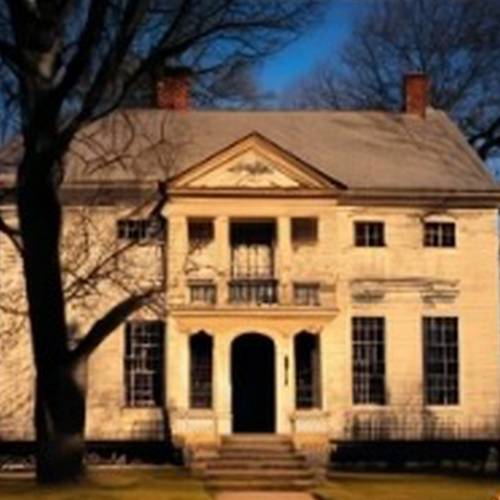Willis Tower (Sears Tower)
In the heart of Chicago, a city renowned for its architectural marvels, stands the iconic Willis Tower (formerly known as Sears Tower), a testament to human ingenuity and engineering prowess. Soaring 1,451 feet into the sky, this 110-story skyscraper held the title of the world's tallest building for over two decades, from its completion in 1973 until 1998.
Willis Tower boasts an awe-inspiring observation deck called The Ledge, which extends out from the 103rd floor, offering breathtaking panoramic views of the city and its surroundings. Visitors can step out onto the glass-enclosed balconies, providing a thrilling experience of being suspended in mid-air, 1,353 feet above the ground.
Beyond its architectural significance, Willis Tower is a vibrant hub of business and commerce, housing numerous corporate offices and retail spaces. It remains a symbol of Chicago's economic strength and a popular tourist destination, attracting millions of visitors each year.
Willis Tower boasts an awe-inspiring observation deck called The Ledge, which extends out from the 103rd floor, offering breathtaking panoramic views of the city and its surroundings. Visitors can step out onto the glass-enclosed balconies, providing a thrilling experience of being suspended in mid-air, 1,353 feet above the ground.
Beyond its architectural significance, Willis Tower is a vibrant hub of business and commerce, housing numerous corporate offices and retail spaces. It remains a symbol of Chicago's economic strength and a popular tourist destination, attracting millions of visitors each year.
Field Museum of Natural History
The Field Museum of Natural History, a colossal institution dedicated to preserving, studying, and exhibiting the wonders of nature and human cultures. Since its inception in 1893, the Field Museum has amassed an awe-inspiring collection of over 26 million specimens and artifacts, spanning various fields of study, including anthropology, botany, geology, and zoology.
The museum's vast galleries house an astounding array of exhibits, captivating visitors of all ages. Journey through the Hall of Mammals to witness life-sized dioramas depicting diverse animal habitats worldwide. Encounter SUE, the largest and most complete Tyrannosaurus rex skeleton ever discovered, in the Field Museum's iconic Dinosaur Hall. Explore the interconnectedness of life in the Evolving Planet exhibit, showcasing the Earth's dynamic history.
With over 10,000 ancient Egyptian artifacts, the Field Museum boasts one of the world's largest and most comprehensive collections of Egyptian antiquities outside of Egypt. Immerse yourself in the grandeur of the pharaohs' tombs, marvel at intricate mummies, and unravel the secrets of this ancient civilization.
The museum's vast galleries house an astounding array of exhibits, captivating visitors of all ages. Journey through the Hall of Mammals to witness life-sized dioramas depicting diverse animal habitats worldwide. Encounter SUE, the largest and most complete Tyrannosaurus rex skeleton ever discovered, in the Field Museum's iconic Dinosaur Hall. Explore the interconnectedness of life in the Evolving Planet exhibit, showcasing the Earth's dynamic history.
With over 10,000 ancient Egyptian artifacts, the Field Museum boasts one of the world's largest and most comprehensive collections of Egyptian antiquities outside of Egypt. Immerse yourself in the grandeur of the pharaohs' tombs, marvel at intricate mummies, and unravel the secrets of this ancient civilization.
Art Institute of Chicago
Nestled in the heart of the Windy City, the Art Institute of Chicago stands as a cultural beacon, attracting art enthusiasts from around the world. Founded in 1879, this iconic institution has amassed a staggering collection of over 300,000 works of art, spanning centuries and continents.
With an annual attendance of over 1.5 million visitors, the Art Institute is consistently ranked among the top museums in the world. Its collection boasts masterpieces by renowned artists such as Vincent van Gogh, Claude Monet, Pablo Picasso, and Georgia O'Keeffe. The museum is also home to an impressive array of Impressionist, Post-Impressionist, and Modern art.
One of the highlights of the Art Institute is the Terzo Piano Restaurant, located on the museum's third floor. Overlooking the iconic Michigan Avenue, this fine-dining establishment offers a culinary experience that rivals the artistic treasures displayed within the museum's walls. With its sophisticated menu and breathtaking views, Terzo Piano is a destination in its own right.
The Art Institute of Chicago is a testament to the power of art to inspire, educate, and bring people together. Its vast collection, diverse exhibitions, and engaging programs make it a must-visit destination for anyone with an appreciation for the arts.
With an annual attendance of over 1.5 million visitors, the Art Institute is consistently ranked among the top museums in the world. Its collection boasts masterpieces by renowned artists such as Vincent van Gogh, Claude Monet, Pablo Picasso, and Georgia O'Keeffe. The museum is also home to an impressive array of Impressionist, Post-Impressionist, and Modern art.
One of the highlights of the Art Institute is the Terzo Piano Restaurant, located on the museum's third floor. Overlooking the iconic Michigan Avenue, this fine-dining establishment offers a culinary experience that rivals the artistic treasures displayed within the museum's walls. With its sophisticated menu and breathtaking views, Terzo Piano is a destination in its own right.
The Art Institute of Chicago is a testament to the power of art to inspire, educate, and bring people together. Its vast collection, diverse exhibitions, and engaging programs make it a must-visit destination for anyone with an appreciation for the arts.
Lincoln Park Zoo
Lincoln Park Zoo is a verdant oasis that has been captivating visitors since 1868. With over 1,100 animals representing 200 species, it offers an immersive journey into the wonders of the wild.
From the majestic lions and playful penguins to the gentle giraffes and curious monkeys, there's something for everyone to discover. Explore the state-of-the-art Regenstein Center for African Apes, where you can witness the grace and intelligence of these remarkable creatures. Be amazed by the antics of the mischievous meerkats or come face-to-face with the awe-inspiring polar bears.
Lincoln Park Zoo is a place where learning and conservation come together, inspiring countless visitors to appreciate and protect the beauty of the natural world.
From the majestic lions and playful penguins to the gentle giraffes and curious monkeys, there's something for everyone to discover. Explore the state-of-the-art Regenstein Center for African Apes, where you can witness the grace and intelligence of these remarkable creatures. Be amazed by the antics of the mischievous meerkats or come face-to-face with the awe-inspiring polar bears.
Lincoln Park Zoo is a place where learning and conservation come together, inspiring countless visitors to appreciate and protect the beauty of the natural world.




